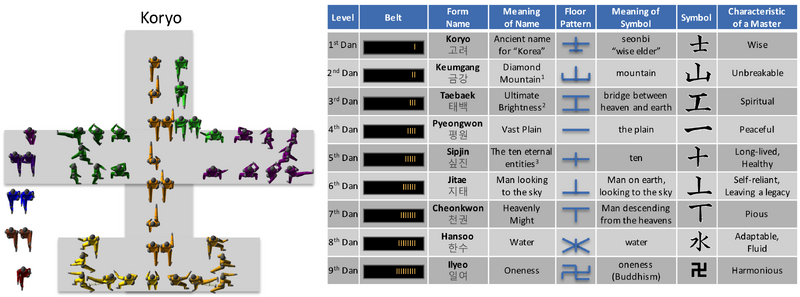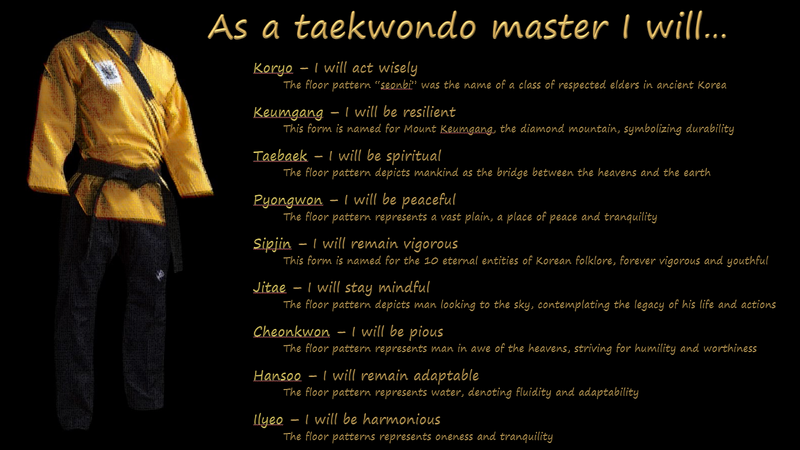Kukkiwon/WT Taekwondo uses the following series of forms (called the Yudanja series) for Black Belt forms:
- Koryo (고려) - first dan, also spelled Goryeo and Koryeo ("learned man", symbolizing a wise person)
- An older, deprecated form called Original Koryo also exists, but it isn't considered so by the Kukkiwon (for gradings or the Master Instructor Course) or by WT (for the World Poomsae Championships).
- Keumgang (금강)) - second dan ("diamond", symbolizing hardness, unbreakable)
- Taebaek (태백)) - third dan ("sacred mountain", symbolizing spirituality)
- Pyongwon (평원)- fourth dan, also spelled Pyeong-won ("open plain", symbolizing peacefulness)
- Sipjin (싶진)) - fifth dan, also spelled Shipjin ("eternal 10", symbolizing health and longevity)
- Jitae (지태) - sixth dan (symbolizes mankind as the connection between heaven and earth)
- Cheonkwon (천권) - seventh dan, also spelled Cheon-gwon ("sky", symbolizing piety)
- Hansoo (한수) - eighth dan, also spelled Hansu ("water", symbolizing adaptability)
- Ilyeo (일여) - ninth dan (symbolizing the Buddhist concept of oneness of the mind and body)
Each of the yudanja forms has a floor pattern that traces out a Chinese character or other symbol. Each character is said to represent a characteristic that should be exhibited by a taekwondo master: wise, unbreakable, spiritual, peaceful, long-lived, pious, adaptable, etc.

